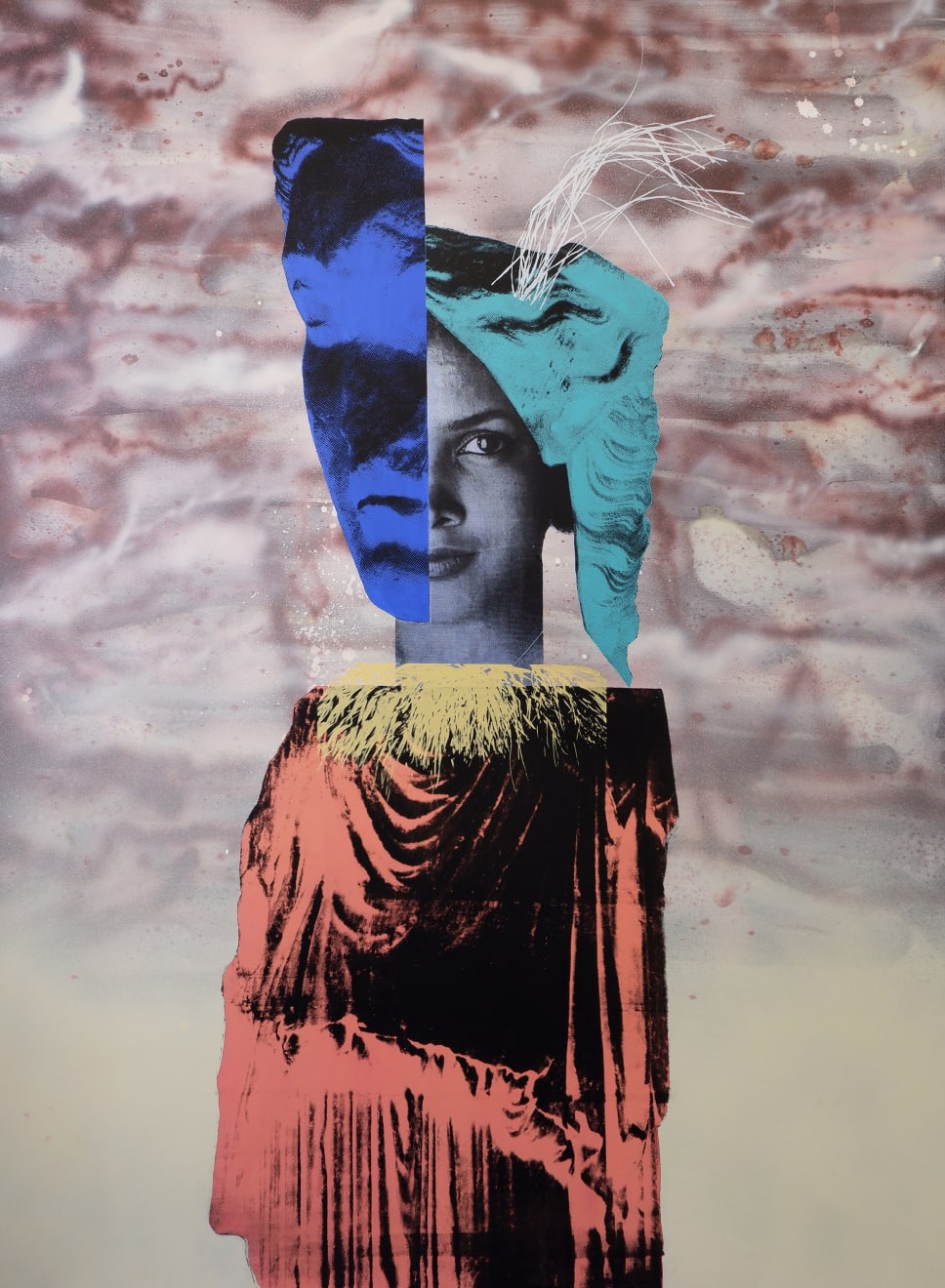Raphaël Barontini
Eurydice, 2020
Acrylic and silkscreen on canvas
86 5/8 x 63 in
220 x 160 cm
220 x 160 cm
Copyright de lâArtiste
Raphael Barontini shares, “Eurydice could be considered a mirror of Black Orpheus. In the mythological story they were a couple and in the movie ‘Orfeu Negro’ (Black Orpheus in Portuguese)......
Raphael Barontini shares, “Eurydice could be considered a mirror of Black Orpheus. In the mythological story they were a couple and in the movie ‘Orfeu Negro’ (Black Orpheus in Portuguese)... they are both the main characters of this love story. For that portrait, the human face comes from a photograph of Marpessa Dawn, an African-American actress who was the main character of the movie. She had a very strong importance for me. I already used her face for other pieces like capes.
I met her in Paris a couple of years before she died. We were both in a demonstration for African-Americans prisoners who fought for their right to have a fair trial.
What is very inspiring for me is how Marpessa could be represented as a Black woman and an ancient mythological heroine. Also I was very amazed and interested by the way the director of the movie chose to revisit this antique myth in the context of a Black favela of Rio de Janeiro in the sixties.
The use of acid colors for the three antique sculpture parts in the body is a way for me to make this new figure surreal and contemporary.
At the same time a monument, a heroin, and a kind of revenant. In the classical myth, Eurydice is brought to hell by Aristaeus and dies. Orpheus is completely in love with her, he uses his music and songs to be allowed to go to hell to bring her back.”
Here, it is also a tribute to Marpessa Dawn that I knew, and an evocation of the mythological figure. I used Antique sculptures to express a tribute to her in parallel with a kind of monumentality.
I met her in Paris a couple of years before she died. We were both in a demonstration for African-Americans prisoners who fought for their right to have a fair trial.
What is very inspiring for me is how Marpessa could be represented as a Black woman and an ancient mythological heroine. Also I was very amazed and interested by the way the director of the movie chose to revisit this antique myth in the context of a Black favela of Rio de Janeiro in the sixties.
The use of acid colors for the three antique sculpture parts in the body is a way for me to make this new figure surreal and contemporary.
At the same time a monument, a heroin, and a kind of revenant. In the classical myth, Eurydice is brought to hell by Aristaeus and dies. Orpheus is completely in love with her, he uses his music and songs to be allowed to go to hell to bring her back.”
Here, it is also a tribute to Marpessa Dawn that I knew, and an evocation of the mythological figure. I used Antique sculptures to express a tribute to her in parallel with a kind of monumentality.
Expositions
2021:The Night of the Purple Moon, Mariane Ibrahim, Chicago, IL, January 30 - March 6, 2021
